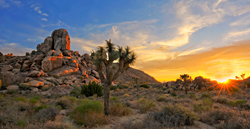The National Park Service has announced their proposal to increase parks fees during their peak seasons at some of the nation’s most popular parks, on Oct. 24.
The proposal raises the entry fees of 17 parks, including Yosemite in California, Shenandoah in Virginia, Acadia in Maine, Grand Canyon in Arizona, Zion and Bryce in Utah, and Yellowstone in California, among others.
The price hike would be used to tackle maintenance and infrastructure, including roads, campgrounds, and bathrooms, which contribute to the quality of visitor experience, according to the New York Times. The National Park Service asserts that there exists an $11 billion accumulation in repairs that need to be addressed.
Many of the anticipated prices could go into effect as early as January 2018, as with the case of Joshua Tree National Park. For 12 other parks, May 1, 2018 determines the change in price; and June 1 for four others – Acadia National Park and Rocky Mountain National Park among them.
The proposal increases the single noncommercial vehicles entrance fee to $70; motorcycles would pay $50; pedestrians and cyclists $30. This is nearly triple the entrance fee at Joshua Tree National Park, which charges $25 for noncommercial vehicles. Currently, entrance fees are charged at 118 of the 417 parks.
A trip to a national park could now be comparable in price to visiting Six Flags amusement park and Busch Gardens, according to the Washington Post.
The 17 affected parks are considered “the top revenue parks” said the National Park Service, which “collect 70 percent of the total of all entrance fees throughout the country.” Uber serves as the contemporary precedent of the model in which prices rise as demand increases.
Interior Secretary Ryan Zinke announced in his statement that “targeted fee increases at some of our most-visited parks will help ensure that they are protected and preserved in perpetuity and that visitors enjoy a world-class experience that mirrors the amazing destinations they are visiting” reported the Washington Post.
However, under President Trump’s budget proposal for 2018, close to $400 million will be cut from National Parks, and bills in Congress aim to offer $12 billion in the national treasury’s federal oil and gas royalties to be used for the parks’ maintenance issues – known as the National Park Service Legacy Act.
“President Trump is a business man,” Senior Homeland Security and Political Science student Greg Laurinavicius said. “He is always trying to find ways to save money and re-appropriate the government funding. I don’t agree with him cutting funding to national parks or not looking at renewable energy, but hopefully he will save money. But I also do agree with many things he is doing now.”
National Parks Conservation Association’s director of budget and appropriations Emily Douce said, “The president is proposing these huge cuts in the budget, then turning and asking people to pay these exorbitant fees to fund the maintenance needs in our parks.”
“Congress helped establish many of the national parks for the American people, and it’s up to Congress to pay for the backlog. Fees are necessary, but they need to be affordable.”
President and Chief executive of the National Park Foundation Will Shafroth said, “They’re trying to do something tangible. It’s provocative in the way that it’s going to get people thinking about this.”
The issue has certainly sparked interest and consideration of national parks, and their significance. Dr. David Tietge, Associate Professor at Monmouth, discusses the various viewpoints toward the parks in their history of conservation and use.
“You really have three major players. You have John Muir, who was so protectionist about the national parks that he wanted to regulate it to the point where general access was very limited or prohibited altogether…he had a spiritual sense of the national parks and thought that they could not be improved upon.
Then you have people on the very opposite end of the spectrum, who are motivated by manifest destiny, who think that American is there for the picking to take the resources they could get wealthy with – very entrepreneurial in spirit so they didn’t want any regulation.
And then you have somebody like Teddy Roosevelt, who was instrumental in getting the national parks system up and running. He expected the national parks to be used, but so that people had access to them.”
Roosevelt did this as a political tactic in order to gain support for his project, said Dr. Tietge. “People would give their tax dollars to these places, so they needed to know what they were protecting. As president he was able to push through legislation to protect the national parks.”
But with the new proposal, the access to the public that Roosevelt stressed could be hindered. “It’s a bit unfortunate because it reduces the number of people who can actually afford to visit,” Dr. Tietge said.
With less federal funds being allocated for protection and maintenance of national parks, the idea of setting the precedent of possible private ownership of the land comes into play.
“I hope not,” Dr. Tietge said. “[President Trump] has already made some moves in that direction,” mentioning Trump’s lifting of the federally protected status of some monuments. “The lifting of those protective regulations means that companies can dump their toxic waste into the nearby waterways or they can seize up certain lands to be sold to the private sector for development,” he continued.
Additionally pointing to Trump’s choice for EPA head, Scott Pruitt, Dr. Tietge said, “The direction of the current administration is not national park friendly.”
IMAGE TAKEN from cdn.aarp.net




